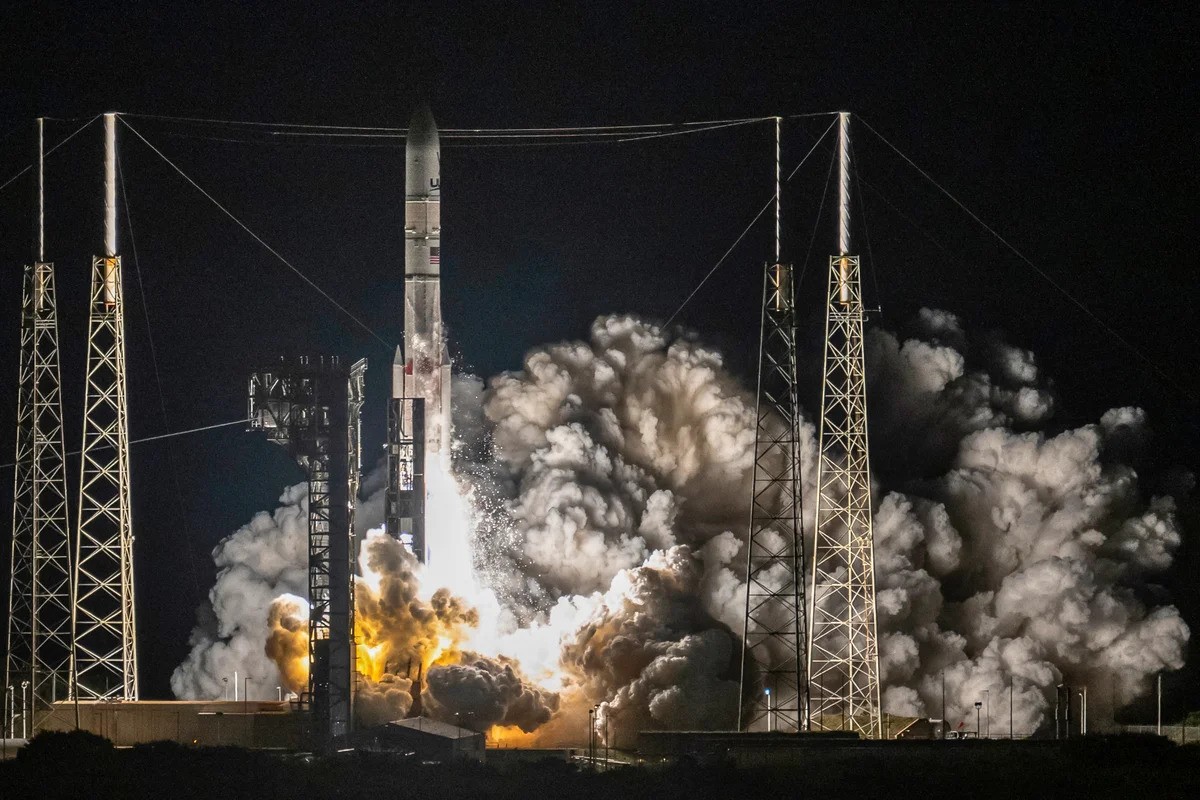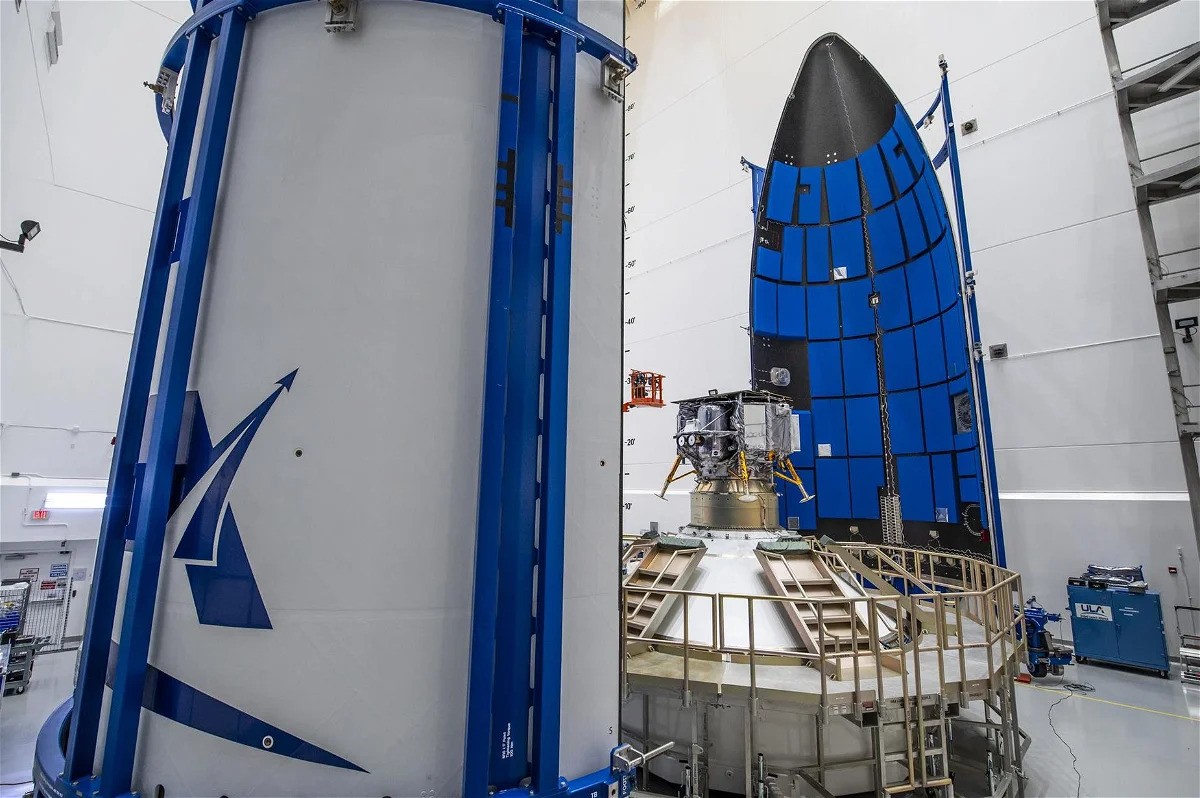Damaged Peregrine Lunar Lander Headed For A Fiery Return To Earth
Damaged Peregrine lunar lander headed for a fiery return to earth. The Peregrine spacecraft was launched just last week on the first U.S. mission targeting a moon landing in over half a century.
Author:Paula M. GrahamReviewer:Hajra ShannonJan 16, 20242.7K Shares102.5K Views

Damaged Peregrine lunar lander headed for a fiery return to earth. The Peregrine spacecraft was launched just last week on the first U.S. mission targeting a moon landing in over half a century.
It is on its way back to Earth due to a critical fuel leak that thwarted its lunar aspirations. This setback marks a disappointment for NASA's Commercial Lunar Payload Services (CLPS) program, which partners with private companies to explore the lunar surface in preparation for human return missions to the moon later in the decade.
Astrobotic Technology, the company responsible for developing the Peregrine lander under a $108 million contract with NASA, announced on Sunday that they had decided to dispose of the spacecraft by allowing it to disintegrate midair during its descent back to Earth.
"While we believe it is possible for the spacecraft to operate for several more weeks and could potentially have raised the orbit to miss the Earth, we must take into consideration the anomalous state of the propulsion system and utilize the vehicle’s onboard capability to end the mission responsibly and safely," according to an update postedto the Pittsburgh-based company’s website. "We do not believe Peregrine's re-entry poses safety risks, and the spacecraft will burn up in Earth's atmosphere."
The fate of the Peregrine vehicle has been sealed following a series of challenges encountered on its journey to the moon. These challenges include an "anomaly" that caused its solar-powered battery to face away from the sun and a critical fuel leak that deprived the spacecraft of sufficient propellant to execute its intended mission of a gentle lunar touchdown.
The specific cause of the fuel leak remains unclear. Astrobotic and NASA are scheduled to provide additional updates on the mission during a news conference at 12 p.m. ET on Thursday.
“„It is a great honor to witness firsthand the heroic efforts of our mission control team overcoming enormous challenges to recover and operate the spacecraft. I look forward to sharing these, and more remarkable stories, after the mission concludes on January 18. This mission has already taught us so much and has given me great confidence that our next mission to the Moon will achieve a soft landing.- Astrobotic CEO John Thornton
Weighing Disposal Options
Astrobotic had several disposal options for the Peregrine lander. While leaving the spacecraft adrift in the cosmos was a possibility, the company opted against it due to concerns about the potential risks posed by the damaged spacecraft. Leaving it uncontrolled in space could result in collisions with other objects, including operational satellites.
Another option considered might have been a crash-landing on the moon, a fate that some spacecraft, intentionally or unintentionally, have met in past lunar missions.
However, the company ultimately chose to bring the Peregrine vehicle back to Earth, where it will be obliterated upon reentry into the planet's thick atmosphere at high speeds. Astrobotic stated that this decision was influenced by "inputs from the space community and the U.S. Government on the most safe and responsible course of action."
Critical Errors
Had Peregrine successfully reached the moon, it could have achieved the milestone of becoming the first U.S. spacecraft to land on the lunar surface since NASA's Apollo 17 mission in 1972. However, just hours after the spacecraft's launch on January 8, Astrobotic conceded that a soft landing on the moon was no longer feasible.
In response to this setback, Astrobotic altered its approach, intending to repurpose the vehicle as a satellite once its fuel tanks were depleted. Despite the initial fuel leak, Peregrine's propulsion capabilities persisted, allowing the spacecraft to continue its journey for thousands of miles, albeit in a compromised state.
Throughout the majority of the mission, the Peregrine lander relied solely on its attitude control thrusters, which are small engines mounted to the side of the lander designed for maintaining stability and executing precise movements. At a certain juncture, the company reported a brief activation of one of the spacecraft's main engines. These main engines are intended to provide up to three powerful bursts, propelling the Peregrine lander further toward the moon once in space.
However, due to the fuel leak, Astrobotic indicated that sustained, controlled burns of the main engines were unattainable. As of Monday, the company stated that the spacecraft was situated approximately 218,000 miles (351,000 kilometers) away from Earth.
Peregrine's Accomplishment
Astrobotics successfully activated some of the science instruments and payloads onboard the Peregrine lander. Among NASA's five payloads, the Neutron Spectrometer System and the Linear Energy Transfer Spectrometer were operational, collecting valuable data on radiation levels in space, as announced in a January 11 news release. Although NASA initially intended to gather this data on the lunar surface for future human missions later in the decade, the space agency emphasized the significance of the acquired data even in the current circumstances.
Additionally, the Peregrine lander was able to activate a brand-new NASA sensor called the Navigation Doppler Lidar. This innovative system utilizes lasers and the Doppler effect—leveraging wave frequency to measure distance—for precision navigation, a crucial aspect of the spacecraft's lunar landing capabilities.
"Measurements and operations of the NASA-provided science instruments on board will provide valuable experience, technical knowledge, and scientific data to future CLPS lunar deliveries," said Joel Kearns, the deputy associate administrator for exploration with NASA's Science Mission Directorate, in a statement.
However, one of NASA's scientific instruments, the Laser Retroreflector Array (LRA), was unable to function. The LRA comprises eight prisms embedded in aluminum, intended to reflect lasers and provide precise location information. NASA designed this array to serve as a permanent fixture on the moon, assisting other spacecraft in orienting their positions.
Similarly, several other payloads specifically crafted for lunar operations are now stranded aboard the Peregrine lander. This includes a rover developed at Carnegie Mellon University and five small robots from the Mexican Space Agency, designed to be catapulted onto the lunar surface. In addition to scientific payloads, the Peregrine spacecraft carries various mementos, letters, and even human remains that customers paid to have flown on this mission.

Paula M. Graham
Author

Hajra Shannon
Reviewer
Latest Articles
Popular Articles
